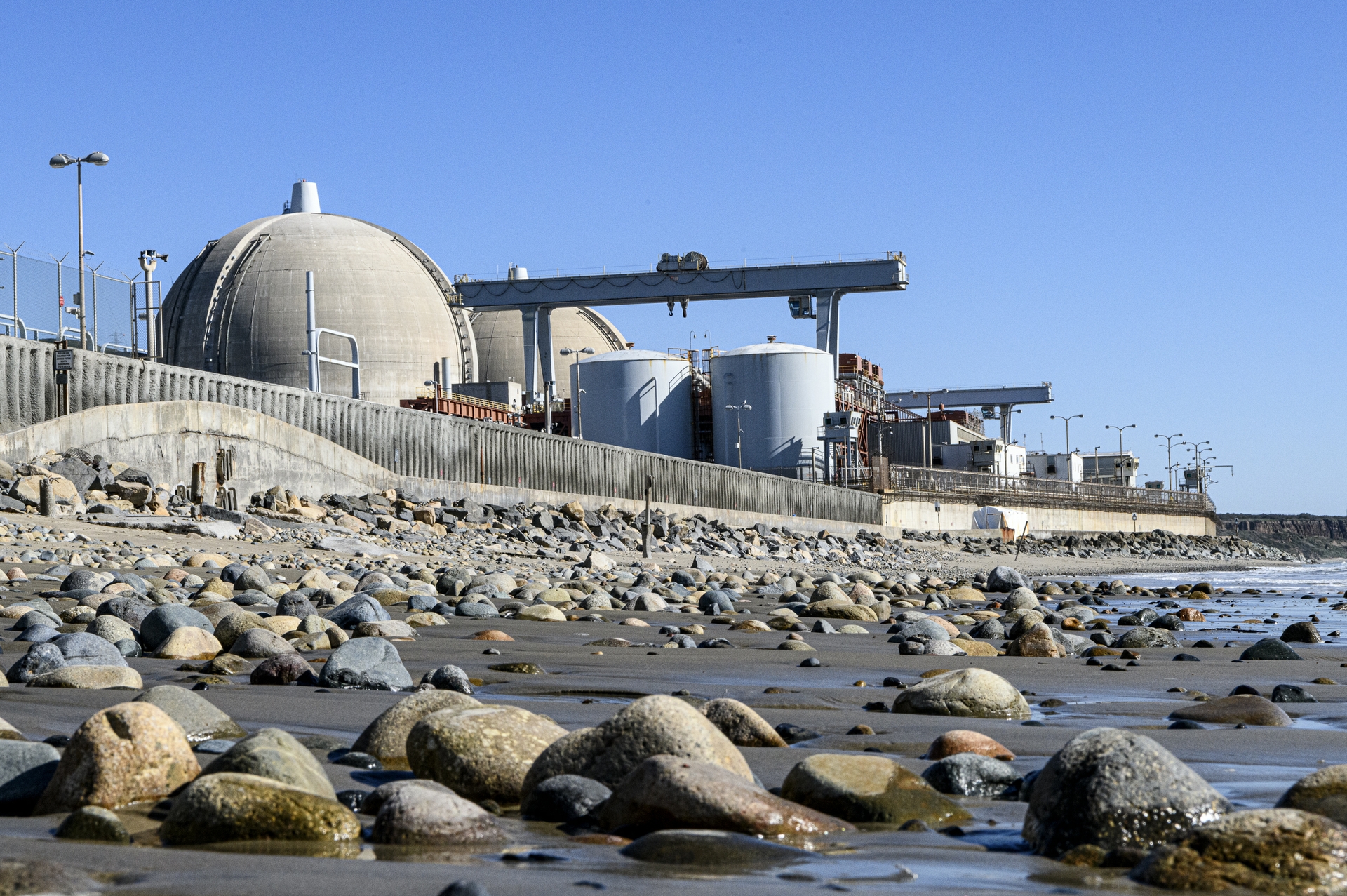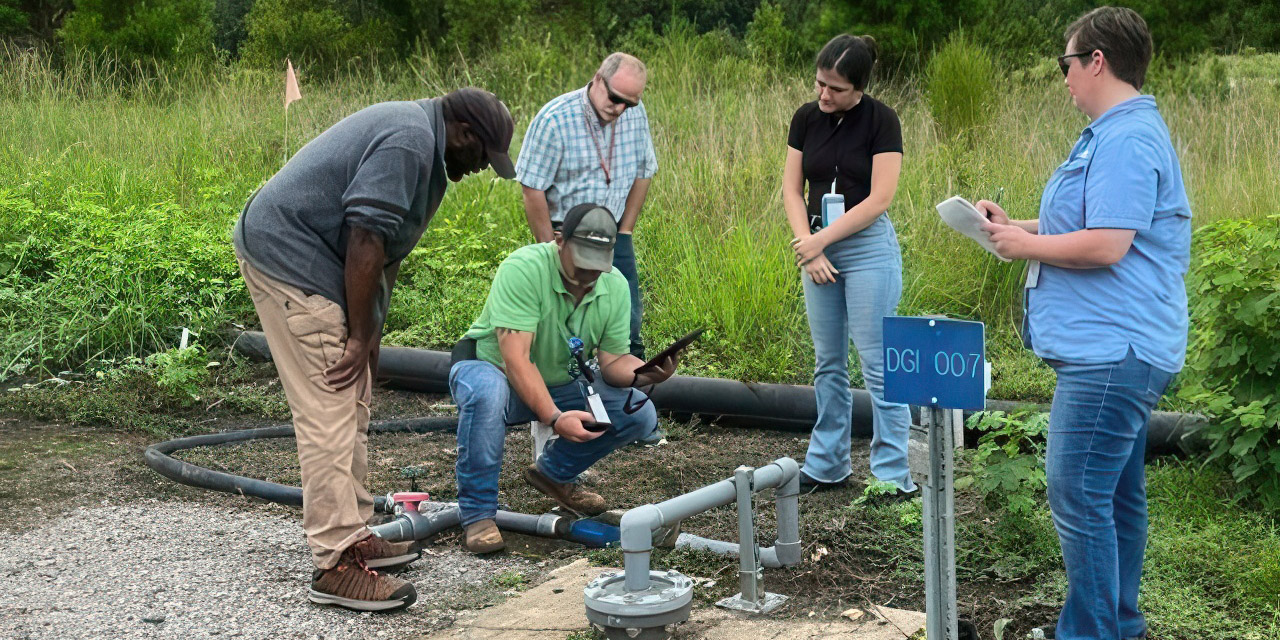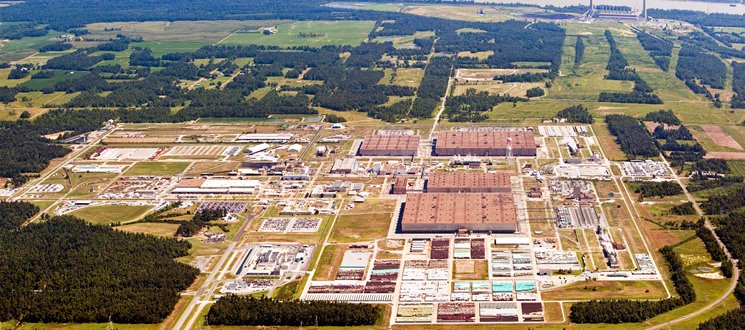INL spent fuel transfers are ahead of schedule

Crews at the Department of Energy’s Idaho National Laboratory Site recently completed work to transfer baskets of spent nuclear fuel ahead of a September 30 deadline.
Radwaste Solutions is a specialty magazine dedicated to the decommissioning, environmental remediation, and waste management segments of the nuclear community.


Crews at the Department of Energy’s Idaho National Laboratory Site recently completed work to transfer baskets of spent nuclear fuel ahead of a September 30 deadline.

The Department of Energy’s Office of Environmental Management has issued a request for qualifications related to the department’s Cleanup to Clean Energy initiative for utility-scale energy projects at the Savannah River Site in South Carolina.

Workers at the Department of Energy’s Hanford Site in Washington state recently finished filling the last large concrete basin at the K Reactor Area with cement-like grout. The basin stored reactor fuel rods from historic plutonium production in the 1950s.

Crews are making significant progress on the construction of the K-25 viewing platform at the Oak Ridge Reservation in Tennessee, the Department of Energy’s Office of Environmental Management announced on August 20. When completed next year, the elevated platform will offer a sweeping panoramic view of the massive 44-acre footprint of the K-25 Building, which once produced enriched uranium used in the weaponry that ended World War II.

The Nuclear Decommissioning Authority (NDA), the government agency charged with cleaning up the United Kingdom’s nuclear sites, has awarded three contracts totaling £30 million (about $39 million) for research into new decommissioning techniques.

The Nuclear Regulatory Commission noted two low-level regulatory violations during a recent inspection of the San Onofre Nuclear Generating Station, which is currently undergoing decommissioning in Southern California. The violations involved the shipment of two reactor pressurizers from San Onofre to EnergySolutions’ disposal facility in Clive, Utah.

A collaboration between Savannah River Nuclear Solutions (SRNS) and Savannah River National Laboratory (SRNL) is making progress toward processing non-aluminum spent nuclear fuel (NASNF) as part of the site’s accelerated basin de-inventory mission. SRNL is the managing and operating contractor at the Department of Energy’s Savannah River Site in South Carolina.

Savannah River Nuclear Solutions (SRNS), the management and operations contractor for the Department of Energy’s Savannah River Site, announced that it has injected more than 100 million gallons of clean artesian well water to neutralize shallow groundwater contamination underneath 33 acres of a former coal storage yard and the associated runoff basin at the site in South Carolina. According to Ashley Shull, senior scientist for the project, “100 million gallons is nine times more water than [is] contained in the Georgia Aquarium in Atlanta.”

Waste Management Symposia announced that the theme of next year’s Waste Management Conference (WM2025) will be “Empowering A Sustainable Future—Advanced Technologies, AI, and Workforce Development across the Nuclear Landscape.” To be held in Phoenix, Ariz., March 9–13, the conference will showcase how new technologies and the evolving digital world are transforming the global nuclear landscape, supply chains, infrastructure, and work norms.

The Department of Energy’s Office of Environmental Management has issued a final request for proposals for an infrastructure support services (ISS) contract at the department’s Paducah Site in Kentucky, which is the former home of the Paducah gaseous diffusion uranium enrichment plant. DOE-EM has conducted extensive cleanup and environmental remediation activities at the site since the late 1980s.

Team members at Oak Ridge National Laboratory achieved a milestone with the removal of a lower reactor vessel, according to a U.S. Department of Energy news release.
Workers with the Oak Ridge Office of Environmental Management (OREM) contractor UCOR successfully lifted and removed the lower reactor vessel from the Oak Ridge Research Reactor, also known as Building 3042.

The OPTIMUS-H transportation cask from NAC International. (Photo: NAC)
NAC International announced that the Nuclear Regulatory Commission has certified a highly shielded version of the company’s OPTIMUS (Optimal Modular Universal Shipping) transportation package for radioactive materials and waste. NAC’s OPTIMUS-H is now approved under 10 CFR Part 71 with Certificate of Compliance (CoC) USA/9392/B(U)F-96, effective Aug. 5, 2024.
The OPTIMUS-H CoC follows licensing approvals of the cask in Canada and Australia. Previously, the lightweight version of the OPTIMUS package, OPTIMUS-L, received certification from the NRC and the Canadian Nuclear Safety Commission.
NAC unveiled its first OPTIMUS to the public at the 2020 Waste Management Conference in Phoenix. Since then, NAC has delivered 22 OPTIMUS-L and nine OPTIMUS-H systems to support North American packaging and transportation projects.
The International Atomic Energy Agency announced on Aug. 7 that its experts have confirmed that the tritium concentration in the latest batch of water to be released from the Fukushima Daiichi nuclear power plant is far below Japan’s operational limit. Tokyo Electric Power Company (TEPCO) began discharging the treated and diluted water that day.
 The Defense Nuclear Facilities Safety Board, which provides safety oversight of Department of Energy sites, is holding a public hearing on August 14 on benchmarking of best practices in the management of aging infrastructure.
The Defense Nuclear Facilities Safety Board, which provides safety oversight of Department of Energy sites, is holding a public hearing on August 14 on benchmarking of best practices in the management of aging infrastructure.
According to the DNFSB, the goal of the hearing is to gather information from relevant organizations on best practices in infrastructure aging management to inform the development of potential safety improvements to DOE programs.

Sogin (Società Gestione Impianti Nucleari), the state-owned company responsible for the decommissioning of Italy’s nuclear plants and the management of radioactive waste, announced on July 30 that it has completed the first phase of dismantling Garigliano nuclear power plant’s reactor vessel with the removal of contaminated metal components from the deflector.

The Department of Energy has issued a request for information to gather input on its proposed package performance demonstration, which is intended to demonstrate the robustness of spent nuclear fuel transportation casks in hypothetical accident conditions. By simulating severe accident scenarios, the DOE said it intends to show to the public and stakeholders the safety and reliability of transporting SNF by rail, heavy-haul truck, and barge.

The Nuclear Waste Technical Review Board (NWTRB) announced it will hold a public meeting on August 29 to review information on the Department of Energy’s management and plans for disposing of its spent nuclear fuel. The hybrid (in-person/virtual) meeting will begin at 8:00 a.m. EDT and is scheduled to adjourn at approximately 5:00 p.m. EDT.

Workers at the Savannah River Site have recently completed the replacement of a piece of equipment that the Department of Energy said in a July 31 press release is “essential for operations in the site’s H Canyon chemical separations capable facility.”

Work crews have started retrieval of radioactive and chemical waste from a third set of underground storage tanks at the Hanford Site, according to the Department of Energy's Office of Environmental Management. Contractor Washington River Protection Solutions (WRPS) is retrieving and transferring more than 325,000 gallons of waste from the single-shell Tank A-101 at the site's A Tank Farm. The waste is being sent to a newer double-shell tank for continued safe storage.
Retrieval activities began one month after workers emptied the site’s 21st single-shell tank. Waste removed from the 21 tanks totals about 3 million gallons.

Despite efforts to increase hiring, the Department of Energy’s Office of Environmental Management continues to be understaffed, according to a recent Government Accountability Office report. The GAO found that, at the end of fiscal year 2023, DOE-EM had 263 vacant positions across its headquarters, cleanup sites, and EM Consolidated Business Center—a vacancy rate of 17 percent. The office is responsible for the cleanup of the environmental legacy waste resulting from decades of nuclear weapons production and government-sponsored nuclear energy research.